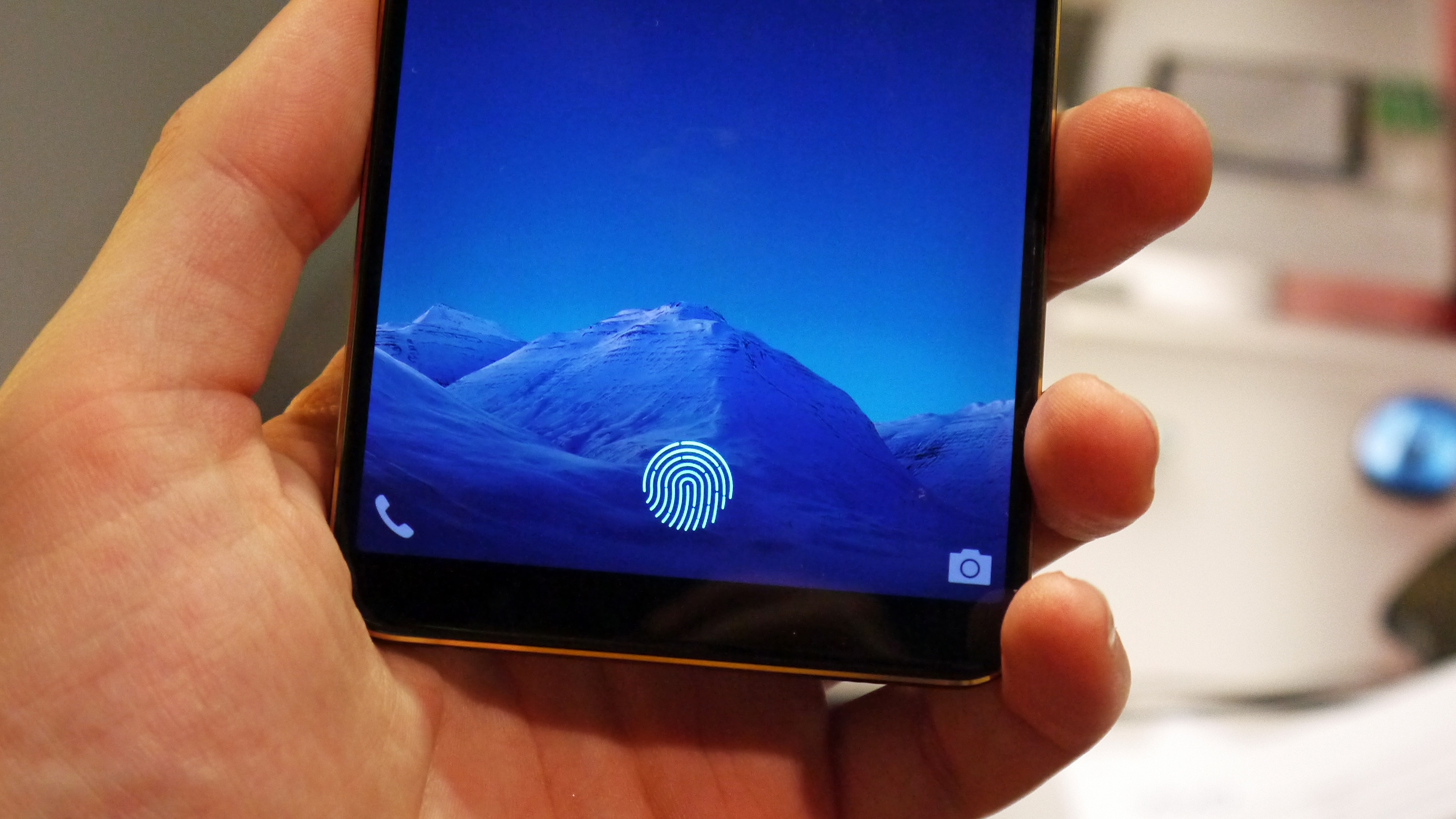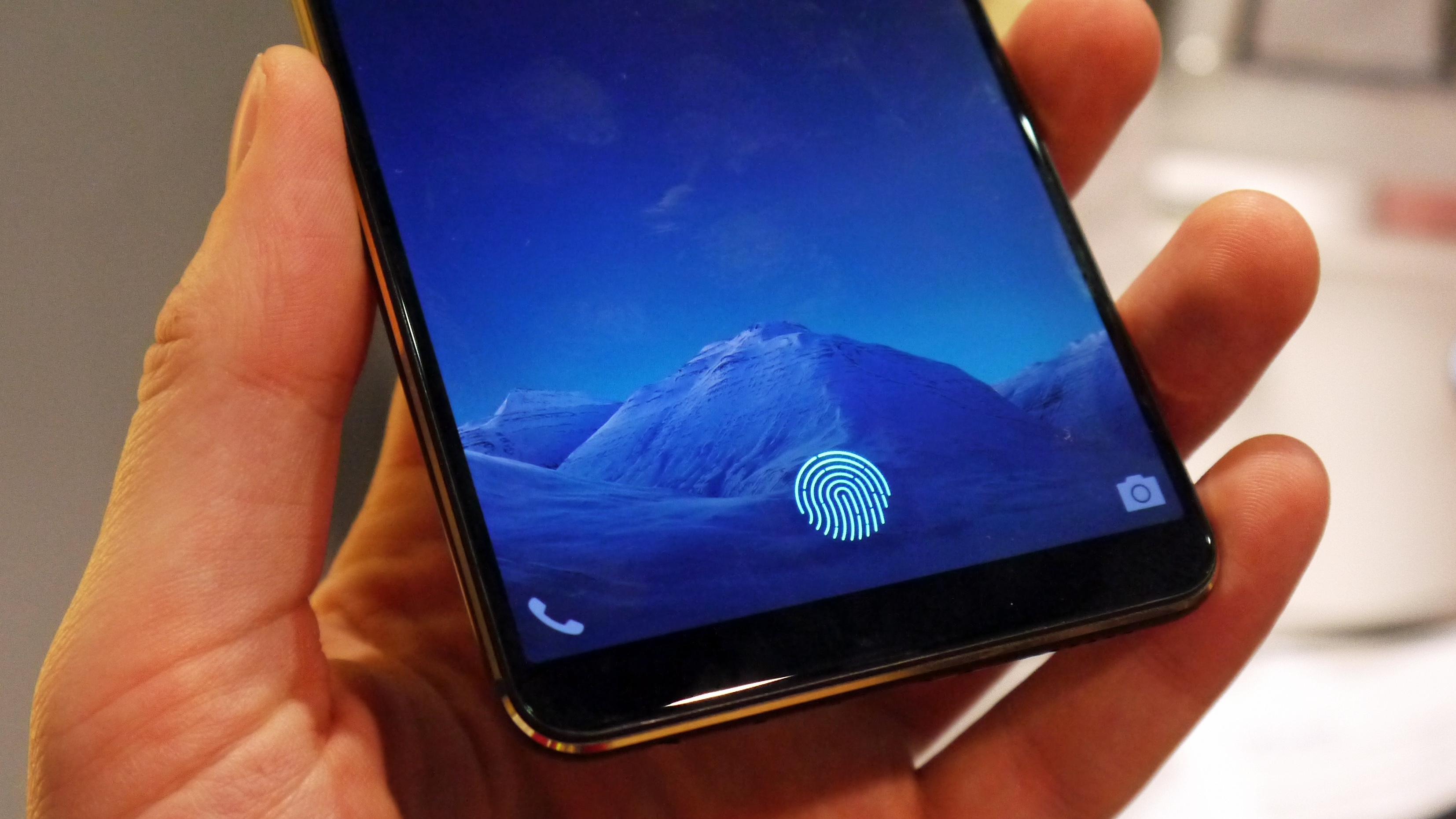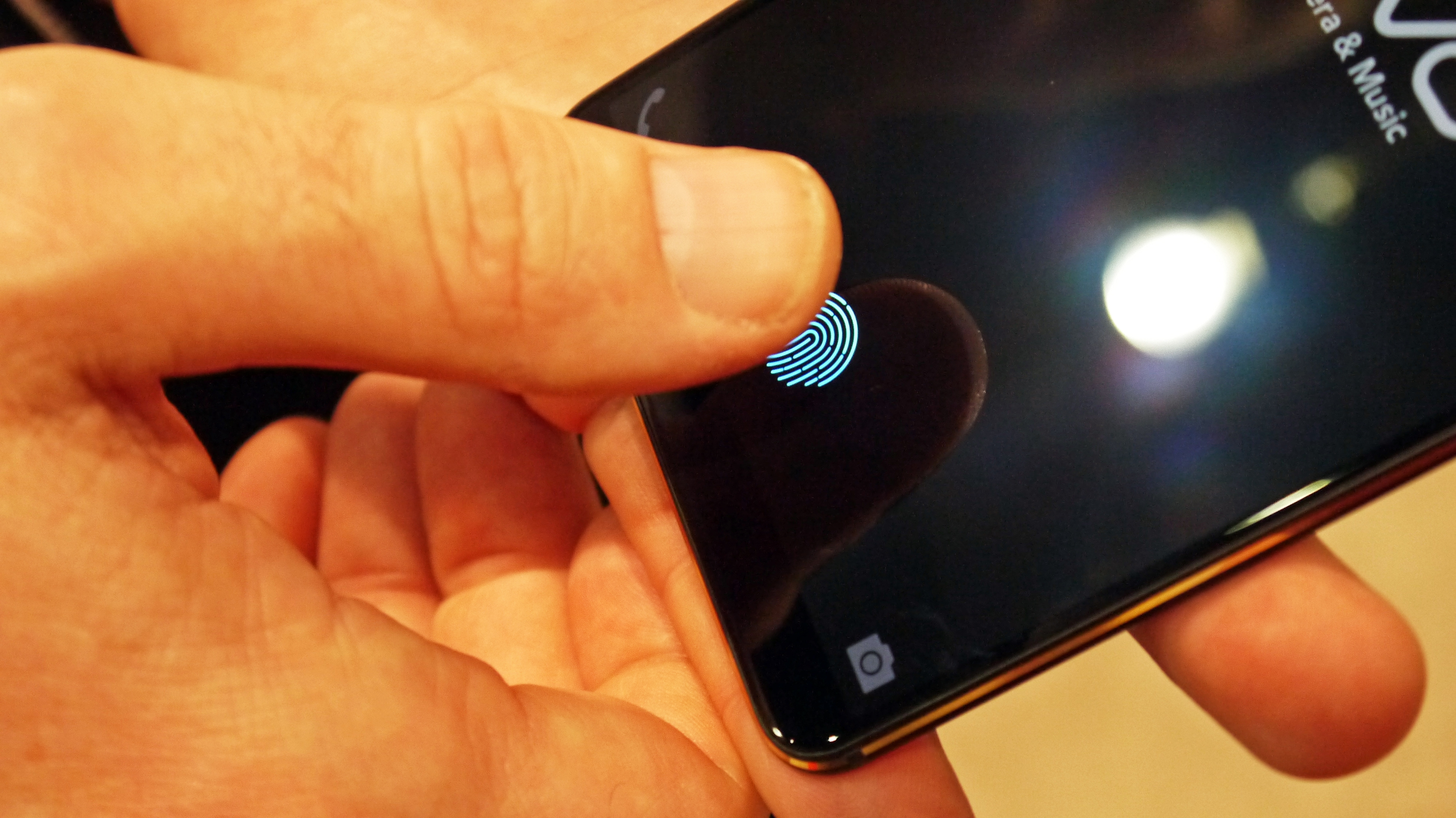In-depth look: the world's first smartphone with an in-display fingerprint scanner
We've tried out Vivo's in-screen technology

It's been one of the most hotly rumored new smartphone features of the past few months, and now we've finally got to see it in action, on a proper handset that's due to launch in the coming months.
We're talking about the in-display fingerprint scanner, a feature that was rumored for both the Samsung Galaxy Note 8 and iPhone X in 2017, but which failed to materialize on either handset.
Instead, it's Chinese firm Vivo which has beaten the likes of Apple and Samsung to the punch, and we got hands-on with its yet-to-be-named smartphone at CES 2018 in Las Vegas.
What is it?
This is the world's first smartphone with an in-display fingerprint scanner. Vivo did show off the technology in 2017, where it was built into a prototype device, but this time around it's in a phone that will actually be launched.
As the fingerprint scanner is built into the display there's no need for a physical home key on the front of the phone, which means this Vivo handset has slender bezels above and below the large screen.
It also means there's no need for a scanner on the rear of the phone. This gives the manufacturer greater flexibility in terms of design, as the digit reader doesn't have to be considered when planning the aesthetics of the device.
Vivo hasn't broken any new design ground with this handset though, as it probably wants to ensure that the technology works properly before exploring any potential new form factors.
Sign up for breaking news, reviews, opinion, top tech deals, and more.
Vivo phone with in-display fingerprint scanner hands-on gallery




The new technology also allows phones to be thinner, and the Vivo phone is certainly slim – which is good, because the huge display makes it both tall and wide.
Its placement within the display also means the fingerprint scanner is ideally located for your thumb, making it easy to hit.
There's no potential smudging of the rear camera lens, or fumbling to find the scanner due to poor placement (we're looking at you, Samsung), and it also means you don't have to pick the handset up from a surface to use the scanner.
How does it work?

The Vivo smartphone uses an optical fingerprint sensor that's bolted to the rear of the OLED display panel of the phone.
The sensor itself is built by Synaptics, and it uses the light emitted by the OLED panel to read your finger and scan your print.
Most phones use capacitive sensors for their fingerprint readers, which require your finger to have a pulse to be read. The optical sensor can’t physically sense a pulse, but Synaptics told us that it has built in a robust anti-spoofing system to ensure its reader can't be fooled by others trying to imitate your fingerprint.
You'll only know the sensor is there because the phone displays a fingerprint icon on-screen, prompting you to present your digit. Once the phone is unlocked, you won't know the sensor is there.
What's it like to use?

There's something rather magical about using the in-display fingerprint scanner. It took us back to the first time we used a traditional fingerprint scanner on a smartphone, and we are just as impressed this time around.
It works really well, and it's surreal to see the phone read your fingerprint but not actually see any signs of the scanner – just a whole lot of screen.
While the technology works, it's not as quick to scan and unlock as current smartphone fingerprint scanners. You have to hold your finger on the screen for a brief moment, allowing the OLED panel to illuminate your finger and authenticate your digit.
We're talking less than a second, so you're not left waiting around, but for those used to rapid fingerprint unlocks you're likely to notice the slight delay here.
Is it easy to set up?

In short, yes. It's a very similar process to any other fingerprint setup on a smartphone, only this time you're tapping your finger on an icon on the display, rather than a physical sensor.
It's one of the longer setup processes though, as it requires three rounds of scanning your fingerprint to build up an accurate image.
We were able to register our fingerprint in around 30 seconds, and you can register multiple fingers.
We'd recommend both thumbs, so it doesn't matter if you're holding the phone with your right or left hand, and both forefingers, allowing you to easily unlock the phone when it's lying on a surface.
Can I see it in action?
You certainly can! Check out the short video clip below of us using the fingerprint scanner to unlock the handset.
I got to check out the world's first phone with an in-display fingerprint scanner.The phone from Vivo will be available in 'early 2018' in select markets. The scanner is made by @Synaptics, and is mounted on the back of the OLED panel. #CES2018 #ces pic.twitter.com/Mldt9ADrP1January 10, 2018
When does the phone launch, and can I get it?
The Vivo smartphone with in-display fingerprint scanner will go on sale sometime in the first half of 2018, but exact markets are yet to be confirmed.
It’s worth noting, though, that Vivo doesn't have a presence in some key global markets such as the US and UK, so if you live in either of these places it's highly unlikely you'll be able to get your hands on the phone.
Pricing is also currently unknown, but the likelihood is that this will be an expensive handset.
What's next for the technology?
Rival phone manufacturers are tipped to follow in Vivo's footsteps, and launch their own devices with in-display fingerprint scanners in 2018.
By the end of the year we could have a choice of handsets packing the technology, and the hope is that there will be at least one handset with it available in all major markets.
Looking a little further into the future, we could see multiple optical image sensors built into displays – or even entire displays featuring the technology, which would mean you could place your finger anywhere on the screen and have your fingerprint read.
While it's technically possible to have a full-screen fingerprint scanner right now, it would be too expensive to put into a smartphone in 2018.
Synaptics told us it needs a couple more years of development to reduce the cost and size for such technology to become a viable option for our smartphones and other mobile devices.
- New year, new tech – check out all our coverage of CES 2018 straight from Las Vegas, the greatest gadget show on Earth

TechRadar's former Global Managing Editor, John has been a technology journalist for more than a decade, and over the years has built up a vast knowledge of the tech industry. He’s interviewed CEOs from some of the world’s biggest tech firms, visited their HQs, and appeared on live TV and radio, including Sky News, BBC News, BBC World News, Al Jazeera, LBC, and BBC Radio 4.